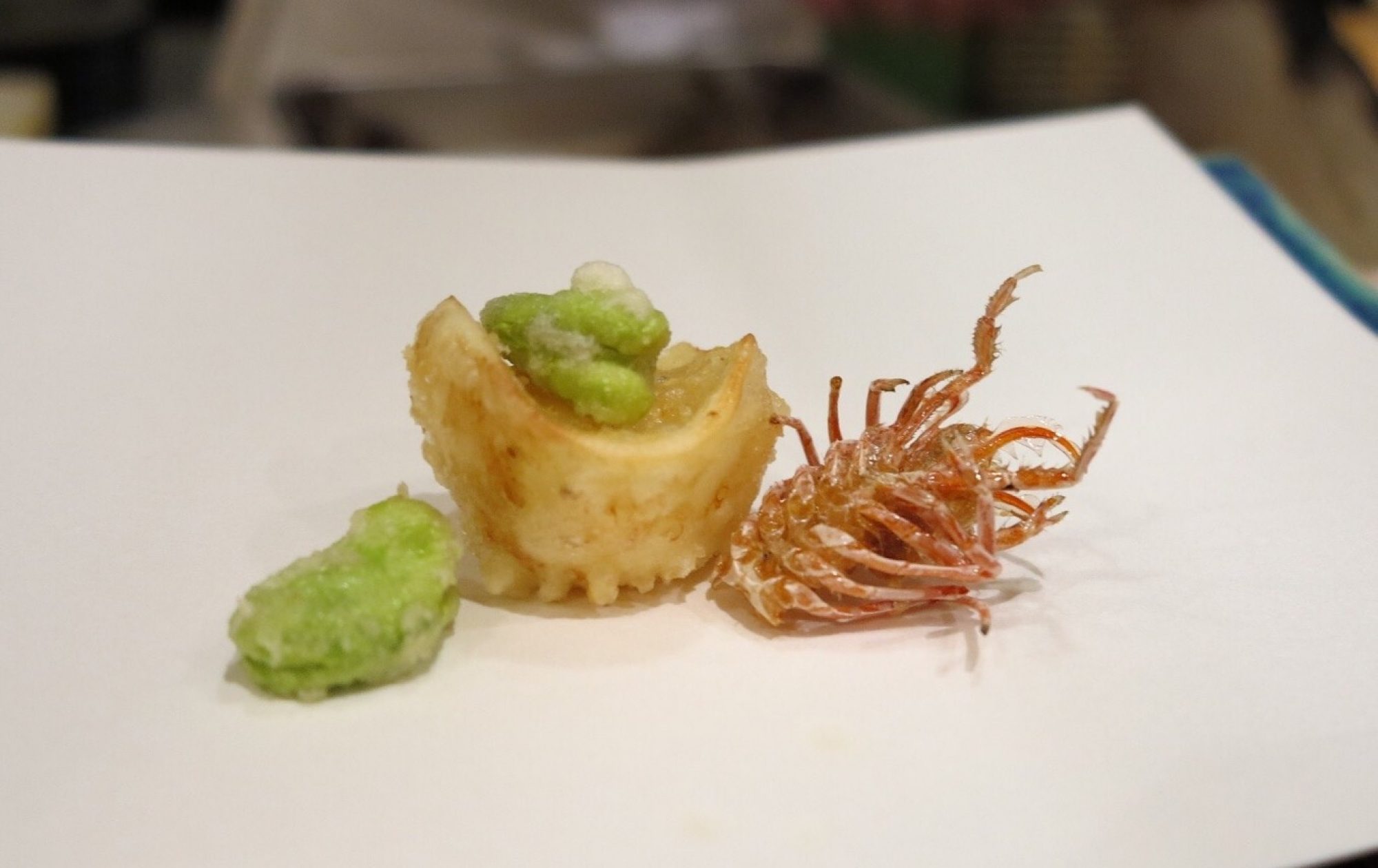‘Twas a drizzly evening in Tokyo and for some reason, everytime it rains I feel compelled to reflect on life (notice how in music videos, there is that cliche depiction of a contemplative subject staring out the window? It always happens to be raining too). Inevitably these reflections include some less philosophical revelations such as the amount of fat I have accumulated from festive feasts consumed in the past few weeks. Over some serious sensations of guilt, I decided that for one night at least, I must not succumb to that evil glutton in my mind who keeps drawing me away from foods that are (relatively) low in calories and fat. And that is how I ended up trekking my way to Tamawarai, a small soba shop buried in one of the most inobtrusive streets near Harajuku.

The restaurant was a little difficult to spot because the entrance to Tamawarai was anything but ostentatious. I eventually found my way with the help of Google Maps and this lonely looking little lantern.
It was only 5:30 pm and I was the first customer of the night. 
For a traditional soba-ya, the glittery silver menu was rather flashy, with a calligraphic drawing of the lonely little lantern at the corner. The main food menu was divided into three sections – Otsumami (snacks, generally eaten as accompaniment to alcohol), soup soba, and cold soba.
The first thing I opted for was an otsumami, the grilled kuruma-ebi. Since I hate peeling prawns I just ate the entire thing, shell included. This could have been unpleasant at other places but the shell of this prawn was so thin and crunchy that I felt more like I was just snacking on a prawn shaped, prawn flavoured crisp with real prawn flesh inside! This was fantastic with my ume-shu (Japanese plum liqueur). 
My next otsumami was the dashi-maki tamago (dashi as in fish stock, maki as in roll, and tamago as in egg. In short, a fish stocky roll omelette). Nothing can go too wrong with dashi-maki tamago! This was standard in a good way; huwa huwa (the Japanese expression for soft, fluffy things) in texture, served while it was still piping hot. 
My final otsumami was the misoyaki which was basically a perfectly circular smear of delicately flavoured miso paste containing small bits of spring onion, grilled and served on a hot metal plate. 
Finally, oh star of the night – my natto soba! I’m aware that there are many natto haters out there (both in and out of Japan) who find the pungent smell of fermented soybeans vomit-inducing, but seriously, natto is one of the things that truly taught me what an acquired taste really means. In my opinion, acquiring a taste does not necessarily require repeated exposure, nor does it have to be a slow developmental process that needs to be nurtured intentionally unless you are actually neophobic. Sometimes, all it takes is a situation that triggers an urge to give something one more try. For example, I always hated natto as a kid – but it was when I saw a random woman eat natto on rice as though it were the most delicious thing in the world that I felt impelled to give the smelly beans one more chance. This opened my gustatory senses to a whole new world of different types of natto, which might not have been possible had I not been in the particular situation. So, natto-rice woman, thank you for appearing in my life that day! (I’d also like to thank my dad for making durian appear to be exotic ice cream)
OK, back to my bowl – The natto beans here were very large compared to the standard sized natto commonly found in supermarkets. Also on the soba were seaweed, spring onions, katsuobushi (bonito flakes), and the obligatory raw egg in the middle.
Neba-neba! (That’s the Japanese onomatopoeia for sticky, stringy, slimy things)
Having been living in Oxford where my closest source of artisanal Japanese noodles was udon from Koya in London, and then Hong Kong where the sushi and ramen trends have overtaken the Japanese culinary scene, I have not been having brilliant soba for a long, long time. I couldn’t help smiling as soon as I had my first bite of this nicely firm, aromatic soba.
The tsuyu sauce had an elegant flavour that was suitably strong without overpowering the soba’s sweet buckwheat taste; its refinedness also allowed the freshness of all other ingredients to shine through. Definitely a well-crafted bowl of soba that can only be the product of some very skilled hands.
My mom ordered the tempura soup soba that I also tried a bit of. Whilst the tempura was not particularly commendable, the hot soba, which was significantly thicker than usual soba, had a chewy, grainy texture that was just as impressive as the cold natto soba I had. 
As usual the meal ended with soba-yu (hot water used to cook soba) poured into the remaining tsuyu after all the noodles were eaten. A wonderful meal that did not make me feel too heavy afterwards, yep
Tamawarai
Address: 5-23-3 Jingumae, Shibuya-ku, Tokyo
東京都渋谷区神宮前5-23-3
Telephone: 03-5485-0025
P.S. Whilst looking for their precise address online, I realised that Tamawarai actually received its first Michelin star last year! I’d say that was well deserved 🙂





